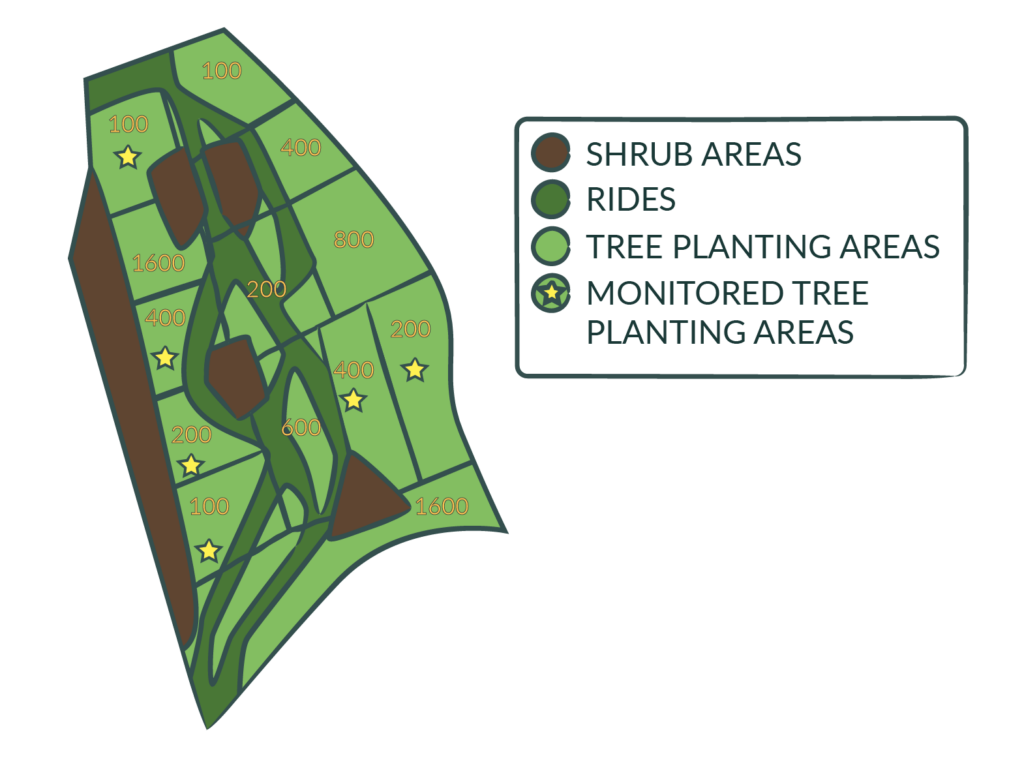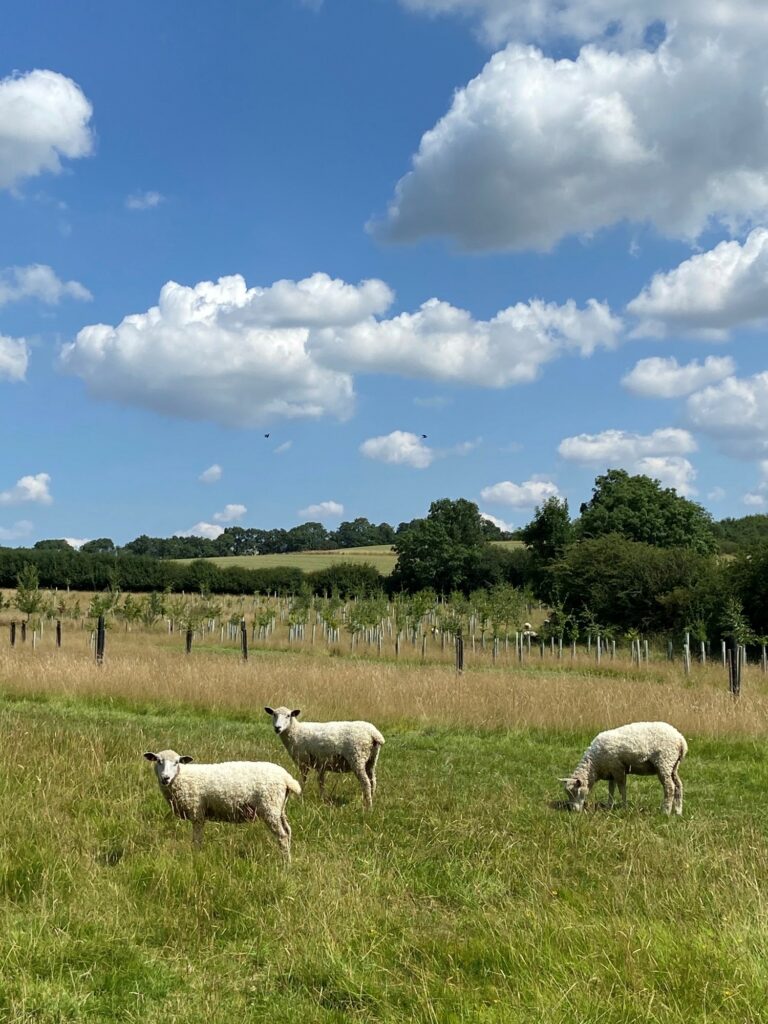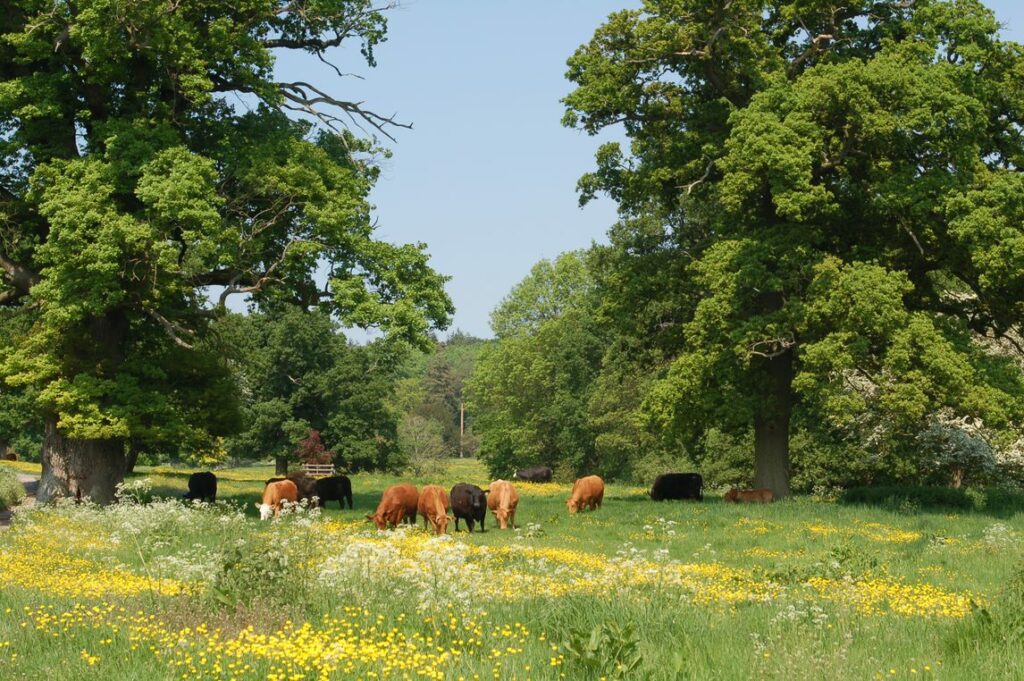As reflected upon in my last piece, climate change will inevitably drive adaptation in the farmed landscape. This will range from an appreciation that heavily tilled, late drilled arable crops pose an unacceptable risk of being caught out by a wet autumn/winter season in almost any region and circumstance, to farms in certain catchments taking the view that the system as a whole which they have successfully operated for generations is no longer viable with increasingly unstable meteorology. Indeed, it’s land at both ends of the soil texture spectrum – both heavier clays and lighter sands – which equally pose challenges for management going forward.
As any farmer knows (and despite the current cultural and academic zeitgeist that we need to see less of it because ‘ruminants’) pasture is, alongside forestry, the safest land use in terms of generalised climate resilience but also, importantly, soil health and protection – one of the key elements of regenerative agriculture. We also know that pasture has the potential to be the greatest land carbon sink in a temperate climate (with the exception of the now rare, wet peatland).
So when we’re looking to maintain agricultural production on land which is becoming increasingly marginal for intensive arable or horticultural cropping, whilst potentially making the most contribution to the economy’s net zero commitments, agroforestry – farming with trees and shrubs – is going to receive a lot more attention in the coming years. It’s worth noting, for example, that the recent SFI24 drop includes two new agroforestry maintenance options, while there are varied (though patchy) options currently available to help establish such a system via schemes such as the England Woodland Creation Offer (EWCO), the Woodland Trust and the National Forest.

Back in 2016, we established our own 5ha field-scale silvopasture (grazing with trees) experimental plot at the Allerton Project in partnership with the Woodland Trust. This was on the site of a field of permanent pasture, and we established some 2,800 trees in a range of densities from 100/ha to 1600/ha in a natural planting scheme with trees individually guarded. These trees were a mixture of native hardwood species:
- Aspen
- Bird cherry
- Wild cherry
- Crab apple
- Wild privet
- Field maple
- Hornbeam
- Small leaved lime
- Oak
- Silver birch
- Sweet chestnut
- Walnut
The aim has been to measure a range of datapoints across the field to identify (if possible) the sweet spot between agricultural production (in this case, of grass growth and sheep) and the natural capital benefits that are expected to accrue from such a land use. These include:
- Increased biodiversity & integrated pest management
- Carbon sequestration (in soil and biomass)
- Nutrient retention
- Water infiltration and retention
- Higher welfare from shelter
When we first planted this field up in 2016, the policy landscape was very different to that of today. In the brave new world of SFI/ELM, carbon crediting, nutrient neutrality, biodiversity net gain, natural flood management and green ‘ESG’ money, I am always at pains to point out to our farming visitors that there’s the potential for such land use to be amongst the most profitable on any farm in the coming years thanks to stacking. What’s more, there’s obviously the potential – in both silvopasture and silvoarable (arable with trees) systems – for fruit and nut trees to be utilised to add an additional income stream to the farm business (as is increasingly being seen on estates across the country). There’s even a greater potential for such things as agritourism.

However, we have learned many lessons from our experience. An initial aim was for the field to be maximised for agricultural production from day one, and we therefore grazed it with commercial mules from the start. Unfortunately, in combination with a series of hard droughts, tree grazing has been a significant challenge during establishment, while individually guarded trees are obviously completely unsuited to the grazing of cattle for many years. Personally, I would advocate (on higher density projects) for alley-cropping and fencing of the trees, even in silvopastoral schemes to avoid a lot of maintenance and replacement of trees, posts and guards – even if that does mean a larger percentage of the field area being taken out of production during the establishment period. (Indeed, we have a smaller 1ac silvopastoral orchard elsewhere on the estate which has thrived with each tree individually guarded with post and rail). We also later discovered that smaller, native breeds were less trouble for the trees.
However, this trial has been the instigation for other fascinating research opportunities which also point the way toward more sustainable production. Given the sheep’s proclivity for grazing our poor trees despite an abundance of grass, we wondered what the implications might be of integrating tannin-rich trees such as willow into the system. We coppiced willow from the estate and then fed it from the branch to test groups of fattening lambs versus a control. As has been demonstrated elsewhere, the tannins in the willow (even at low inclusion rates) were highly effective (up to 100%) for intestinal worm control. This clearly has implications for a reduction in the use of anthelmintics such as ivermectin, which have been shown to have a negative impact on dung beetle populations, and the subsequent nutrient cycling within grazed pasture systems.
But perhaps less well appreciated, we also measured the impact of willow inclusion for greenhouse gas emissions from our sheep, specifically nitrous oxide and carbon dioxide emissions from their urine (alongside ammonia, an aerial pollutant). We can demonstrate that, over the two-week observation period, carbon dioxide emissions were reduced by up to 20%, ammonia by up to 40% and nitrous oxide by up to 65%. (Other research would also suggest a significant reduction in belched methane emissions, but we don’t have the equipment to measure this). Our measured reductions stem from a more efficient uptake of protein in the digestion process and therefore reduced emissions from the urine.

Imagine a silvopastoral system (or grazed rotational options in a silvoarable system) where not only are there demonstrable and enhanced ecosystem services and carbon sequestration being carried out by the farmed landscape itself, but the environmental impact of the livestock themselves is also much reduced, simply by the expedient of judicious tree selection. At the same time, the welfare of the livestock would be better catered for by the shelter offered in a climate of increasing extremes.
We also found that the deep-rooted willow was capable of accessing micronutrients which were lacking in the more shallow-rooted ryegrass, in particular cobalt – a vital element of vitamin B12 production. In fact, we discovered that the lambs fed willow far and away outperformed those which received a cobalt drench when it came to B12 concentration in their blood!
Of course, those farms who can also find the bandwidth to market the produce from such ‘sustainable/regenerative’ systems direct to the consumer stand to gain the most from any such investment; as the market currently stands, there is little premium to had by taking our sheep down the local market. It also must be admitted that agroforestry is likely to be of little interest to a tenant on a 3-year FBT, while landowners might be justifiably nervous about permanent land use change and its impact on land values.
Yet agroforestry is a common land use type elsewhere in the world, for example around the Mediterranean where extremes of heat, especially, have been the norm throughout human history. Even here in the UK, it has been estimated that we have between 390,000 -550,000ha (99% of it silvopasture). Much of this is sparse parkland grazing, which is perhaps not formally associated by farmers with the term ‘agroforestry’, which in my experience can elicit an amount of suspicion if not hostility. In reality, agroforestry is a very broad concept, from grazed orchards to formal alley cropping, linear hedgerows to shelterbelts and riparian buffers. Although it may not suit every farm – and certainly not every field – there is doubtless an increasing place for it in a wide range of farm businesses.




